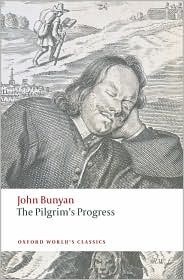STUDY SESSION 8
Introduction (pp. 115-119)
Christian and Hopeful escaped Giant Despair’s Doubting Castle. In this session, we will read of Christian’s experience of the “delectable Mountain.” He encounters four shepherds (Knowledge, Experience, Watchful, and Sincere) on that mountain.
Readers
Narrator (115) – a good normal amount
Christian (115) — normal amount
Shepherds (115, 117) — relatively short
Hopeful (119) — short
Vocabulary
stile (115) = a step or set of steps for passing over a fence or wall (a small ladder)
staves (115) = staffs
thither (115) = to that place; there
Questions (pp. 115-119)
Page #
117 Christians come upon the “delectable Mountains” and gain some respite. What do you think these mountains represent?
117 Though the name is simple, explain the description given to the Hill called “Errour.” See 2 Tim. 2:17, 18. What kind of “errors” should we avoid in our generation?
118 Christian and Hopeful are led to Mount Caution, the very mountain in which they almost died. After that, they are shown “a By-way to Hell.” Explain what this represents.
118 Why is it important to recognize that a door to Hell can be found right in the middle of the delectable mountain? What lessons should we learn here?
119 They were given a sight of the Celestial City through the “Perspective Glass.” When did they best see the celestial city? When in peace or when afraid? Is getting a glimpse of the “Celestial City” a vital necessity? Why or why not? If someone has never gotten a sight of it, can he or she persevere?[1] Why or why not?
Observations & Notes
DELECTABLE MOUNTAINS
Maureen Bradley lists many interpretations (below, pp. 74-75). Thomas Scott says, “The Delectable Mountains seem intended to represent those calm seasons of peace and comfort, which consistent believers often experience in their old age.” (Scott, 163) Horner takes it to be “a fellowship in association with the Palace Beautiful. Instruction, comfort and rest are to be found here” (p. 271).
Various meanings have been applied to the Delectable Mountains. Some see them as representing nothing in particular other than a time of quiet rest. Others see these mountains as a picture of the local church. Still others say that the mountains represent the ministry of the Word of God by godly pastors and its effect on pilgrims. While all these are good interpretations of the Delectable Mountains, might I add another possibility? The Puritans called the Sabbath a ‘market day for the soul.” Could these mountains represent the Sabbath and all that Sabbath rest entails (i.e., a day set aside for instruction in Sunday school, for sitting under the preaching of godly ministers, and for meditation on Scripture and prayer)? If this is what they represent, how do the Delectable Mountains remind you of a market day for the soul? (Bradley, 74-5)
FOUR SHEPHERDS
Whyte sees these four shepherds (Knowledge, Experience, Watchful, and Sincere) as the basic characteristics of a good pastor. Thomas Scott takes these names to be “the more extensive acquaintance of many aged Christians with the Ministers and Churches of Christ…” (Scott, 163)
[1] “Sometimes this vision is revealed to Pilgrims much more clearly than at other times; but no language can describe the glory of the vision, whenever and however it is manifested to the soul; for eye hath not seen, nor ear heard, neither hath it entered into the heart of man to conceive the things which God hath prepared for them that love him. But God reveals them by his Spirit, and sometimes doubtless with such a revelation as language cannot compass” (Cheever, 420).
